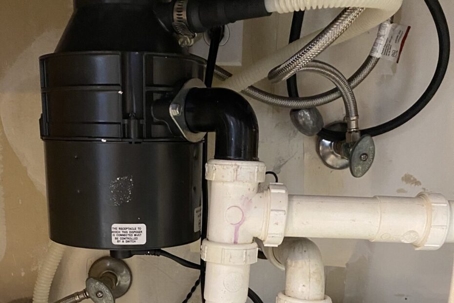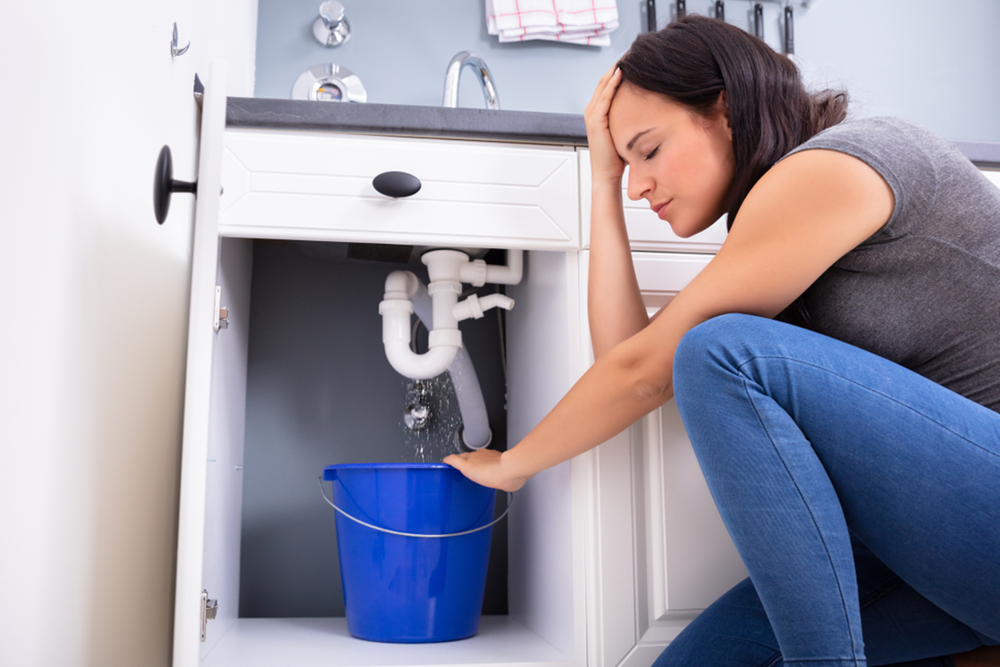Trusted Solutions for Fixing a Dripping Garbage Disposal
Trusted Solutions for Fixing a Dripping Garbage Disposal
Blog Article
The writer is making a few great points regarding Why Is as a whole in this great article in the next paragraphs.

Waste disposal unit are crucial kitchen area appliances that assist in dealing with food waste efficiently. However, a leaking waste disposal unit can be a discouraging and messy trouble to take care of. Fortunately, lots of leakages can be taken care of easily with a few easy actions. In this article, we will go over how to deal with a leaking waste disposal unit successfully.
Introduction
Garbage disposals are mounted under cooking area sinks and are designed to shred food waste right into smaller sized pieces, enabling it to pass through the pipes system quickly. While these devices are typically trustworthy, leakages can occur gradually because of damage, loosened links, or damages to the system.
Common Reasons For Leaks in Garbage Disposals
Worn Seals and Gaskets
Seals and gaskets play an essential function in protecting against water from leaking out of the waste disposal unit. In time, these parts can deteriorate, leading to leaks around the disposal device.
Loose Links
The links in between the garbage disposal and the plumbing system can become loosened with time, creating water to leak out throughout operation.
Splits or Openings in the Disposal System
Physical damages to the garbage disposal, such as fractures or holes in the real estate, can additionally lead to leaks.
Determining the Resource of the Leak
Prior to trying to repair a leaking waste disposal unit, it is essential to recognize the resource of the leakage. This can generally be done via aesthetic evaluation or by carrying out easy tests.
Visual Inspection
Examine the garbage disposal unit thoroughly for any kind of indications of water leakage. Pay attention to locations around seals, gaskets, and connection factors.
Examining for Leakages
One method to examine for leaks is by running water via the disposal system and looking for any visible signs of leakage.
Tools and Materials Needed for Dealing With a Leaking Garbage Disposal
Prior to starting the repair service process, collect the necessary tools and materials, including a screwdriver, adjustable wrench, plumbing technician's putty, substitute seals or gaskets, and epoxy or patching material for fixing cracks or holes.
Step-by-Step Overview to Taking Care Of a Leaking Waste Disposal Unit
Switch off the Power
Prior to trying any fixings, make certain that the power to the waste disposal unit unit is turned off to prevent the threat of electric shock.
Find the Leak
Recognize the specific area of the leakage and determine the reason.
Tighten Connections
Utilize a wrench to tighten up any type of loosened connections between the disposal device and the pipes system.
Replace Seals or Gaskets
If the leak is because of used seals or gaskets, remove the old elements and replace them with brand-new ones.
Patching Cracks or Openings
For fractures or holes in the disposal system, usage epoxy or an appropriate patching product to seal the damaged location.
Examining the Garbage Disposal After Fixing
When the repair service is full, check the waste disposal unit by running water through it to make sure that the leakage has actually been resolved.
Preventive Maintenance Tips to Prevent Future Leaks
To stop future leaks, it is necessary to do routine upkeep on your garbage disposal. This includes maintaining it tidy, preventing placing non-food things or difficult objects down the disposal, and periodically checking for leaks or various other issues.
Verdict
To conclude, dealing with a dripping waste disposal unit is a reasonably straightforward procedure that can be finished with fundamental tools and products. By complying with the steps described in this write-up and practicing preventative maintenance, you can keep your garbage disposal in good working condition and avoid costly repair services in the future.
HERE’S HOW TO FIX YOUR GARBAGE DISPOSAL
WHAT TO DO IF SOMETHING IS STUCK IN YOUR GARBAGE DISPOSAL
If the impeller won’t turn, there’s probably something stuck in the disposal. It could be a steak bone or peach pit, although plumbers report pulling all sorts of inappropriate objects out of disposals, such as bottle caps or aluminum foil. Make sure power to the disposal is off, and look inside to see if you can see the source of the jam.
Never stick your fingers in a disposal. Pull out anything you see with tongs or pliers.
If the disposal still won’t work, it may be time to call a plumber or consider buying a new disposal. GEM Plumbing & Heating is here for all of your garbage disposal needs.
WHAT TO DO IF YOUR GARBAGE DISPOSAL DRAIN IS CLOGGED
Take everything out from underneath your sink and put a bucket or other container under your disposal to catch any water that drains out. Disconnect your disposal from the power supply. If it’s plugged into a wall outlet, unplug it. If it’s hardwired into an electrical box, go to the electrical panel and turn off the breaker for the disposal. Pour ¼ cup of baking soda into the drain, followed by ½ cup of white vinegar. Give the solution a few minutes to fizz and do its work. Look into the disposal with a flashlight to see if you can see an object that might be causing the clog. If you see it, remove it using tongs or pliers. MORE TIPS ON DEALING WITH A CLOGGED GARBAGE DISPOSAL
Never use drain cleaner in a garbage disposal. It can damage the plastic parts inside the disposal. You can also be splashed with the caustic liquid while working to clear the clog. Beware! Never stick your fingers into a garbage disposal. Trust us — not a good idea. In many instances, your dishwasher drains through your garbage disposal. This allows the disposal to grind any large food particles that may be drained out of your dishwasher. There are some jurisdictions, however, where the plumbing code prohibits such a connection. WHAT TO DO WHEN YOUR DISHWASHER DRAINS THROUGH THE DISPOSAL
Run some water in the sink so your plunger has at least a ½-inch of water to create a seal and plunge vigorously up and down several times. You may need to repeat this several times. Run hot water down the drain to clear any residue that remains.

As a serious person who reads about Why Is , I thought sharing that piece of content was really helpful. Sharing is good. Helping people is fun. Thanks a bunch for your time. Come back soon.
Schedule Appointment Report this page